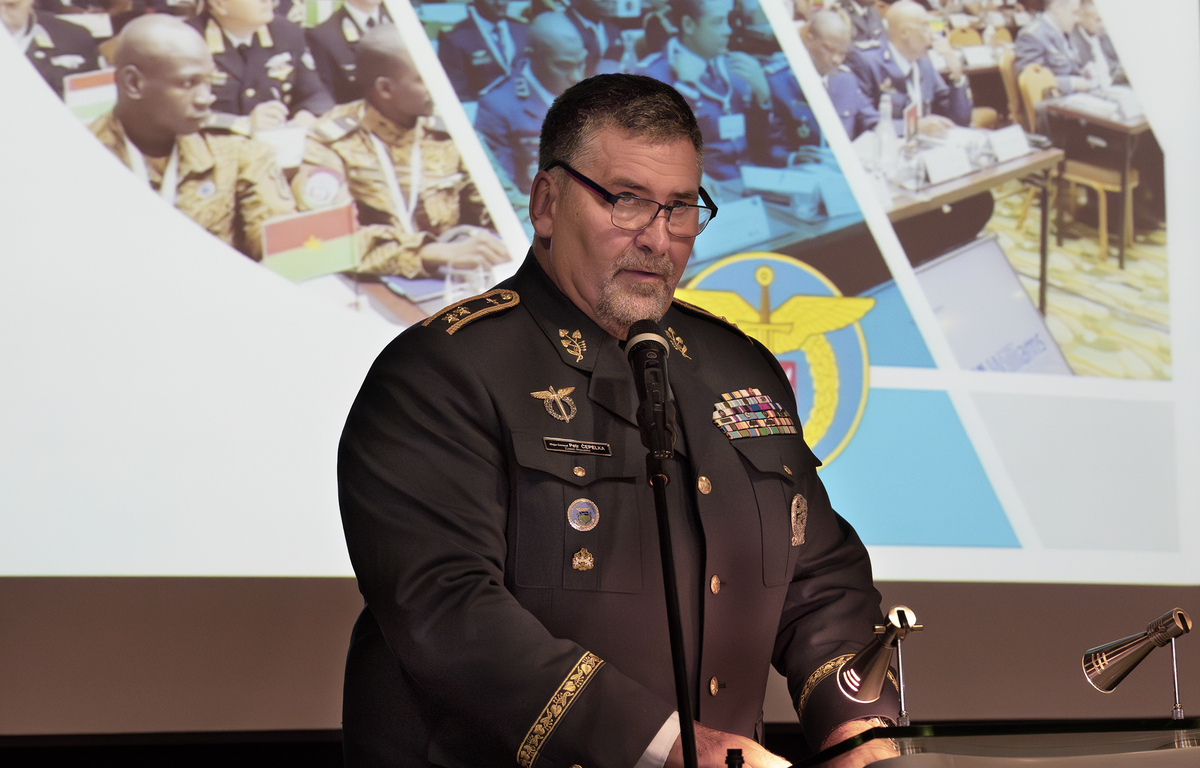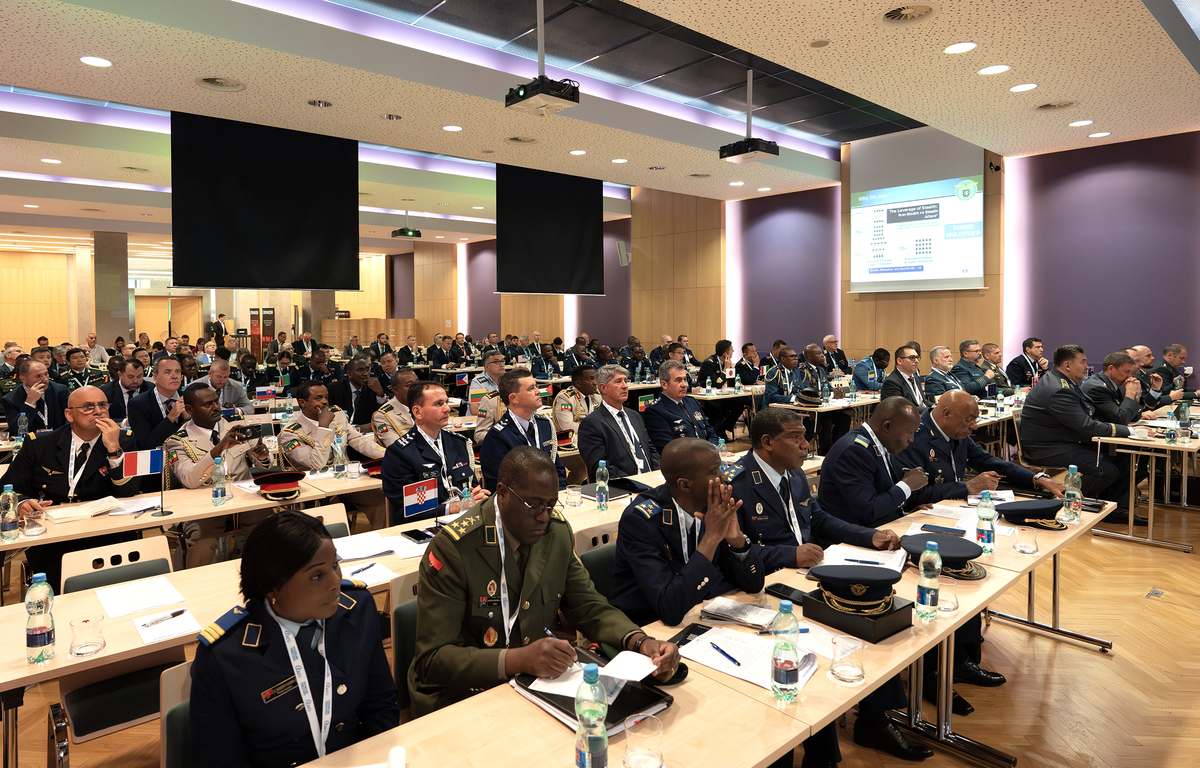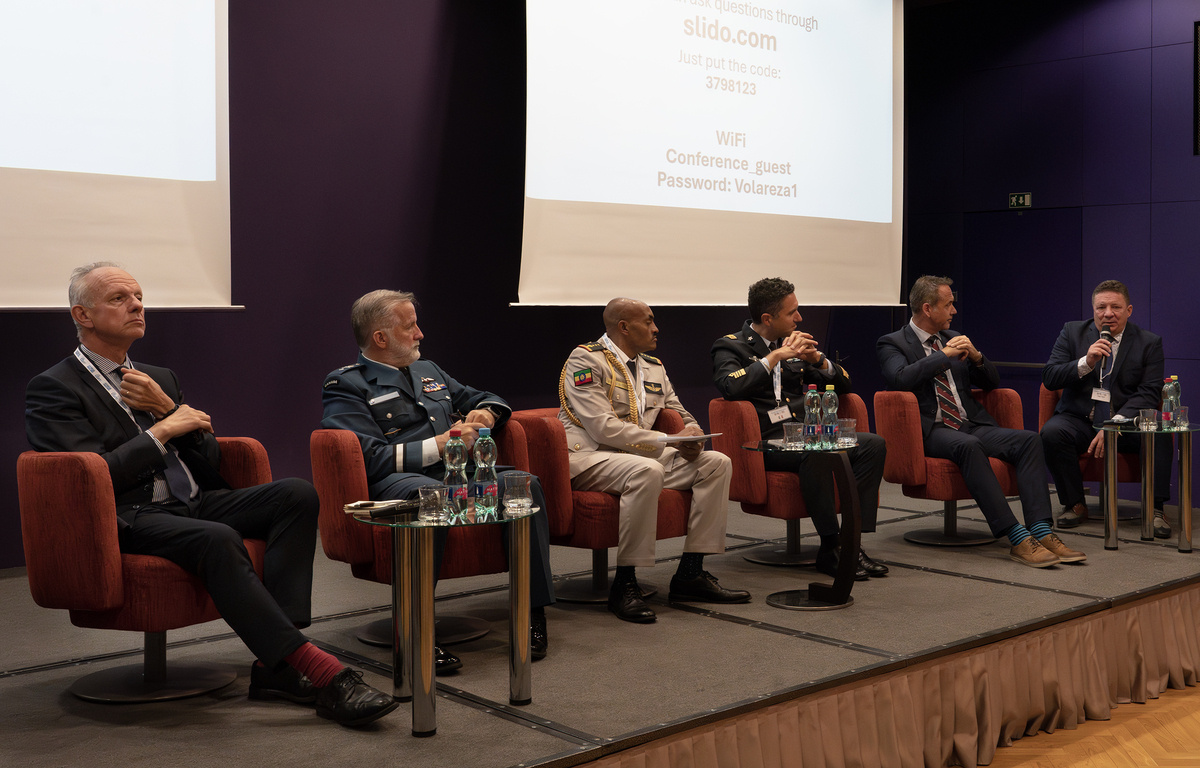Future Air Force Conference 2024: Inspiration and challenges for the Czech Air Force and beyond
From October 15 to 17, the second edition of the Future Air Force 2024 conference, organized by Future Advanced Technologies, DEFCON, and DALI Consulting, took place at the DAP Hotel conference hall in cooperation with the Czech Republic’s Air Force Headquarters. Aero Vodochody AEROSPACE served as the diamond partner of the event, which was part of the Future Forces Forum held last week.
Video: Future Air Force Conference 2024 – inspiration and challenges not only for the Czech Air Force / CZ DEFENCE
The conference gathered experts from military command, the defense industry, and academia to discuss current and emerging trends in aviation, with a particular focus on training aviation personnel. Attending by invitation from the Commander of the Czech Air Force, Maj. Gen. Petr Čepelka, were delegates from 32 countries, representing every continent, including NATO, NATO Flight Training Europe (NFTE), and the European Defence Agency (EDA). Among the more than 100 delegates, six Air Force commanders and 27 generals attended, including General Philippe Lavigne, who recently retired as Commander of NATO’s Allied Command Transformation (ACT).

The conference emphasized three key areas for the future of air forces: innovative flight training, increased collaboration with the defense industry in aviation personnel training, and the integration of unmanned aerial vehicles (UAVs) in military operations, highlighting the challenges of drone operator training.
Innovative approaches to flight training
A primary focus was on streamlining and modernizing flight training. With the introduction of fifth-generation aircraft, the Air Force has reduced the number of tactical aircraft needed, requiring fewer pilots but significantly raising training costs per flight hour. This trend does not apply to the Czech Armed Forces, where 14 Gripen aircraft are dedicated solely to airspace protection without utilizing the full capabilities of the aircraft. Consequently, the Czech Republic is increasing its fleet to 24 aircraft to support its alliance commitments.

The rapid development of new technologies, particularly advanced simulators, is reshaping training by combining traditional methods with virtual and simulated environments. This hybrid approach enables pilots to practice complex scenarios safely, enhancing both crisis management skills and flight training safety.

During the first conference session, General Mauricio Augusto Silveira de Medeiros of the Brazilian Air Force discussed the impact of evolving security needs on pilot training, from initial screening to advanced operational training. He outlined how the Brazilian Air Force aligns training standards with a unified vision of future operational demands. Defense priorities define the Air Force’s mission, ensuring that all equipment acquisitions support mission needs. By understanding the mission requirements and efficiently managing resources, the Brazilian Air Force optimizes training programs for pilots and other personnel.

Air Marshal (Ret.) Ian David Gale, representing DRAKEN, spoke on F-35 training and the essentials that Air Force leadership must address with this aircraft’s introduction. Amid advancing technology and increasingly assertive global actors, he emphasized the importance of fully combat-ready forces. Yet, balancing live, constructive, and virtual training poses challenges, especially given the higher operational costs and networked capabilities of newer aircraft.

Requirements for integrated air defense continue to grow across military forces worldwide, despite increasing pressure to reduce costs. DRAKEN’s extensive experience in providing cost-effective solutions for the Air Force, Navy, Army, and other security agencies offers scalable, multidisciplinary approaches adaptable to diverse military operations, especially in an increasingly complex global landscape.
Following this, Colonel Sleeman, Commander of Air and Space Command of the Australian Air Force, shared insights into the Royal Australian Air Force's (RAAF) transition to fifth-generation aircraft, including reforms to leverage the F-35’s capabilities alongside UAV development. He highlighted Australia's unique challenges—demographic, geographic, and operational—that shape its air force strategy. The RAAF’s successful transition relied on a comprehensive program to address operational gaps, capitalize on existing resources, and direct specific tasks to individual project leaders. Senior officers, typically at the “One-Star” rank, were assigned to oversee implementation over several years, with the resources necessary to carry out the program.

Colonel Sleeman also addressed the unique challenges facing Australia, particularly regarding its demographics, population base, and vast geographic size. The success of the RAAF's transition to fifth-generation aircraft resulted from a strategic program designed to address operational gaps, leverage existing resources, and implement a directive assigning specific tasks to project leaders. Senior officers at the "One-Star" level were appointed to manage project implementation over multiple years, with sufficient resources to ensure successful outcomes.

In his address, Colonel Meseret Getachew Yesuneh, Deputy Commander of the Ethiopian Air Force, emphasized the importance of international cooperation in strengthening sub-Saharan Africa’s aviation industry. His presentation highlighted alternative ways to enhance industry-Air Force relationships to support air force development across Africa, particularly in sub-Saharan countries. Most sub-Saharan air forces aim to procure maintenance, overhauls, new platforms, and quality flight training at lower costs. However, these services are often challenging for private industry to provide due to high investment and skilled labor requirements.

Few sub-Saharan aviation industries currently have the resources to meet the Air Force's increasing demand. For instance, the Ethiopian aviation industry has a long history of training foreign students from Yemen, Libya, Rwanda, Uganda, Chad, Djibouti, and Tanzania. However, achieving excellence remains a challenge due to limited resources.

Colonel Yesuneh suggested that by collaborating with international institutions, the sub-Saharan aviation industry could better meet the Air Force's needs through alternative technologies and pilot training, which would also support industry profitability and international partnerships. Such cooperation would allow air forces to oversee training more closely, eliminating the need to send pilots abroad.
The Czech Air Force was represented at the Future Air Force conference by Maj. Aleš Svoboda, who presented on the selection and training process for F-35 pilots.

International cooperation and private sector involvement in flight training
Another significant point of discussion was the increased collaboration between the armed forces and the defense industry. Today, aerospace technology manufacturers not only deliver state-of-the-art aircraft but also participate directly in the preparation and training of aviation personnel. This includes providing advanced simulators, technical support, and sometimes even complete flight training solutions.
The afternoon session featured addresses from Wing Commander Jason Hawker, a representative of NATO Flight Training Europe (NFTE) and former leader of the RAF Red Arrows; Jaroslav Špaček, Director of the Flight Training Centre in Pardubice (CLV); and representatives from the Canadian and Italian Air Forces.

Jason Hawker outlined NATO Flight Training Europe's (NFTE) vision to create an interconnected network of training centers that meets the full spectrum of aircrew training requirements. NFTE coordinates the placement of pilot trainees across NATO and promotes multinational partnerships for advanced tactical training. Hawker discussed the challenges NFTE has faced in achieving full operational capability and the opportunities NATO allies are exploring to design and build future training infrastructure. Industry involvement has been integral to the project, facilitated through the NATO Industry Advisory Group mechanism.
Colonel Giovanni M. Pasqualucci, Deputy Chief of the Pilot Training, Exercise, and Evacuation Department of the Italian Air Force, discussed the benefits of the Italian Air Force’s cooperation with Leonardo. This partnership has improved training quality and efficiency at reduced costs. When the Italian Air Force restructured its Phase IV flight training program, it collaborated extensively with Leonardo, leading to a transformed approach to pilot training. This partnership ultimately established an international flight training school—one of the world’s leading examples of successful military-industry collaboration.

The establishment of this center of excellence in military pilot training was made possible by the Italian Air Force’s expertise in training and Leonardo’s M-346 advanced jet trainer and ground-based training systems, developed in collaboration with CAE. This cooperation has enhanced soldiers' understanding of the technology they use, improved operational effectiveness, and ensured training aligns with the latest standards and innovations. A crucial benefit is the career continuity for pilots unable to continue military service, enabling them to use their expertise in civilian roles.
Use of unmanned aerial vehicles in military operations
With autonomous technologies becoming central to future military strategies, the use of unmanned aerial vehicles (UAVs) is increasingly indispensable to modern armies. The conference addressed new strategies for integrating drones into military operations, with emphasis on reconnaissance, surveillance, and combat roles. Drones facilitate missions that would be too risky or challenging for human pilots, providing significant advantages on the battlefield. Participants learned from leaders in this field, including representatives from the United States Air Force (USAF) and the German Luftwaffe, about their approaches to UAV operator training.
Lt. Col. Keenan Boes from the USAF presented an overview of best practices for acquiring, equipping, and deploying large UAVs in conflict zones. He stressed the importance of human-centered design for UAV interfaces, the advantages of open architecture and off-the-shelf commercial systems, and the need for effective crew integration. He also highlighted the role of artificial intelligence and automation in command and control, autonomous collaboration, and deconfliction, underscoring the necessity of adaptability in modern combat scenarios.

The Czech Army also highlighted the importance of UAV operator training. Associate Professor Vladimír Smrž from the University of Defence noted the growing demand for certified UAV operators, primarily for UAVs under 15 kg. However, the training for operators of larger, certified UAVs is more intensive and requires airport operations. Three organizations currently provide this training: the Military University, responsible for theoretical training; the Military Academy, which handles practical training; and a specialized military unit managing UAV operations. Dr. Smrž introduced a new bachelor’s program at the University of Defence in Brno, focused on training military aviation personnel and air traffic controllers. This program will include theoretical and practical training to produce certified UAV operators as part of the military aviation cadre.
Lt. Col. Peter Bernewasser, Head of the German Luftwaffe’s UAV Operations Department, and Colonel Ikuret Moses presented on the practical aspects of UAV operator training and deployment.
An essential part of the conference was a showcase from domestic UAV manufacturers. Representatives from AIR-tech and Primoco shared insights into their products and discussed both the practical applications of their UAVs and new projects currently under development.
Conclusion
The Future Air Force Conference underscored the Air Force’s dual challenge of adapting to rapid technological advancements and leveraging the opportunities these technologies present. Innovative approaches to pilot training, stronger defense industry partnerships, and increased use of UAVs are all critical to ensuring future operational success.

The presentations and discussions at the conference underscored that the future of aviation relies on modern technology, private-sector involvement, knowledge from academia, cooperation among stakeholders, and the agility to adapt to emerging challenges.
























